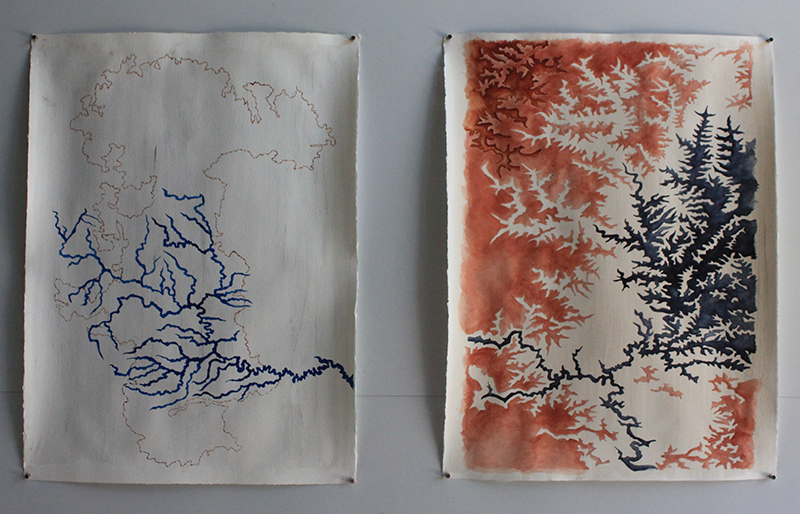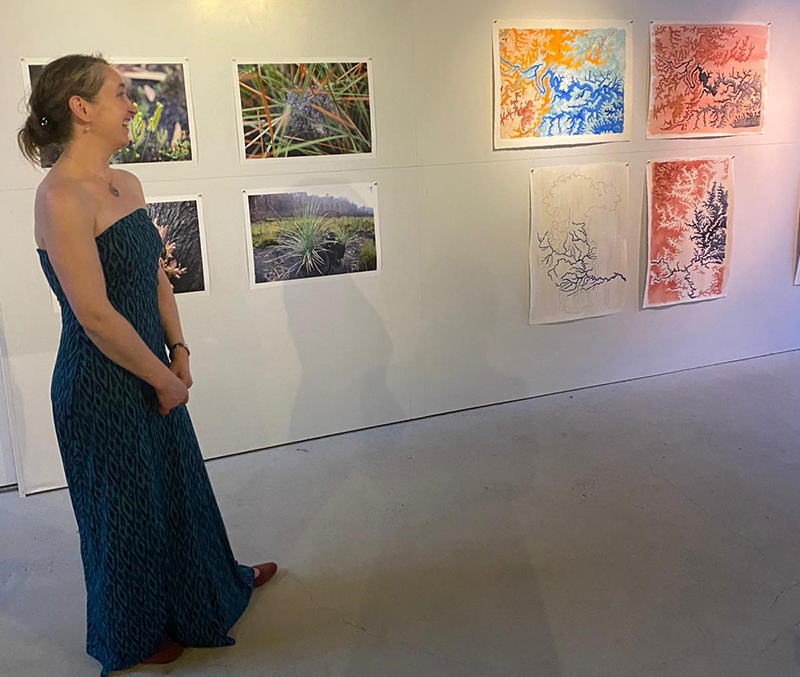Aboriginal Cultural Burning in Australia: Reflections after the Black Summer Fires
By Jennifer Dowdell
In late October of 2019 I’d settled into life at the Bilpin International Ground for Creative Initiatives (BigCi) for a 10-week art residency with four other artists. Our hosts were husband-wife team Yuri and Rae Bolotin. Yuri is a naturalist and Rae a sculptor, and together they co-direct the residency program. During our first few days at BigCi, Rae oriented us to the residency program and her expectations, and Yuri enticed many in our group with day-long bushwalks around the Greater Blue Mountains World Heritage Area. We marveled at the incredible biodiversity and geology; the preservation of such rare ecosystems just a couple of hours’ drive from Sydney. There were high elevation rain forests, sandstone formations, deep river gorges, hanging wetlands, and all manner of eucalpt forests. Deep in the bush we heard the calls of the lyre bird and spied goannas sunning on sandstone tablets; cockatiel and bell bird song echoed through the bush every evening as the sun set over the mountains.
New South Wales was experiencing the impacts of an historic drought and the more bushwalks we took the more we saw evidence of this everywhere, from the brook barely trickling through the majestic Colo River gorge to the parched ground, like concrete underfoot. Given the increasingly hot and dry conditions as spring turned to summer, we were advised to add an app to our phones for tracking bushfire danger in the region. Our hosts insisted it was just a precaution and that it would be a rare occasion to need to worry about bushfires reaching us in our small hamlet in the Blue Mountains.
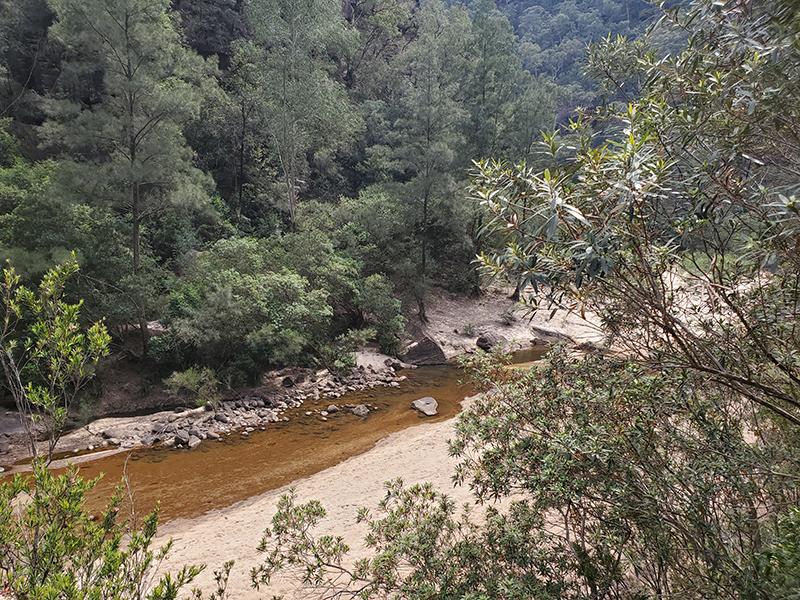
All that changed on the 12th of November when we received a notification that local residents should prepare for evacuation. The wind and temperature conditions had worsened significantly and the Gosper’s Mountain Fire (north of us – deep in the Wollemi wilderness) was moving southward at an alarming pace. We all packed our bags and reviewed our evac plans, awaiting the call to leave for the plains along the floodplain of the Hawkesbury River to the east. But after a day of intense winds, the conditions improved and we were off high alert. Most of us continued to live out of half-packed bags for the next several weeks as the alerts continued to shift between moderate to severe conditions. We watched the fire grow slowly from afar and then quickly, inching further and further south. The air was thick with smoke some days, the light a reddish orange tint from late morning to early afternoon.
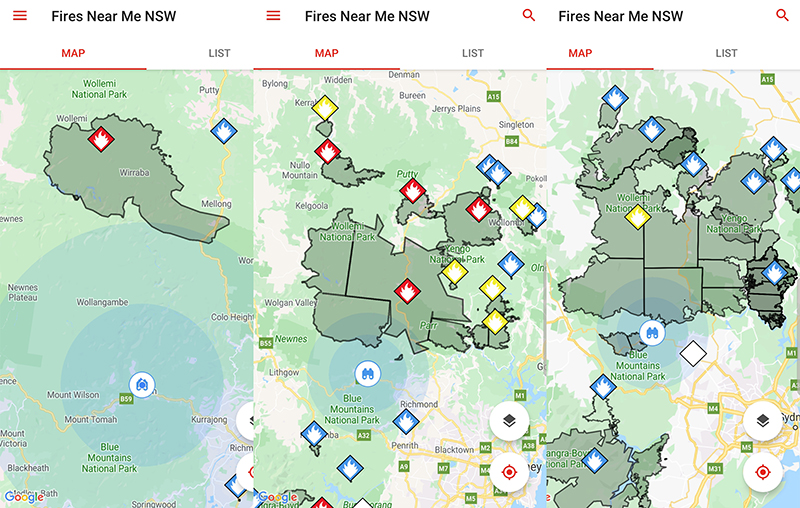
BigCi was closed for the Christmas holidays when the bushfires barreled through our village, wiping out many of the orchards in the region but thankfully sparing most homes and businesses, in no small part due to the heroic work of the New South Wales RFS (Rural Fire Service). No lives were lost in Bilpin, or the neighboring hamlets in our part of the Blue Mountains, but the fire had done enormous damage to the landscape. I returned in early January to a profoundly different place.
“In the immediate aftermath of the fires the air stings the back of our throats, sweet with eucalyptus oil, as we walk along the edge of the blackened bush at the ridgeline of Mount Tomah. The calls of cockatoos and kookaburras are absent in this sepulcher. As far as the eye can see, canyon after canyon wall, a mosaic of scorched earth, the charcoal sticks of once-dense forest against the brown and copper landscape of peeling bark and ash. A multitude of small folds and ridges in the landscape are visible now, a vast playground of geological middens & sandstone pagodas.” Dowdell, JA, The Earth Issue #4, Summer 2020.
The 2019-2020 bushfire season in Australia was considered the most severe in history, exceeding all models and predictions. The Black Summer Fires, as they came to be known, included the Gospers Mountain Megafire Complex that burned 600,000 hectares, or 1.5 million acres. In total, 12 million acres burned across all of New South Wales, the most populous state in Australia. A conservative estimate assumes three billion animals died during the fires—including 30% of the koala population— leaving some species precariously close to extinction.
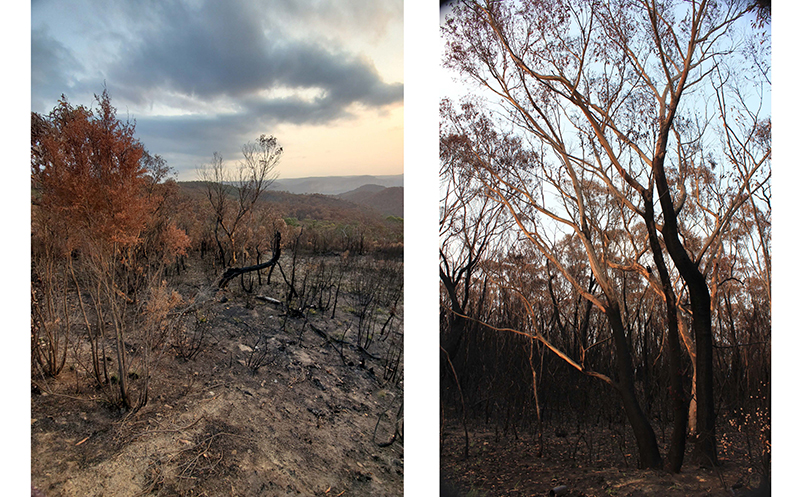
In the aftermath, the government of Australia completed the Royal Commission into National Natural Disaster Arrangements Report to reflect on readiness and response across the country. Eighty recommendations in the report address federal agency needs, including firefighting resources, the deployment of the Australian Defense Force, and adequate responsiveness to climate change data. One glaring omission critics noted was the role that Aboriginal cultural burning and land management techniques should play in the future. In stark contrast, however, the NSW Bushfire Independent Inquiry explicitly acknowledged the importance of engaging with Aboriginal communities in two recommendations: that the government identify cultural burning as an important traditional land management technique grounded in the culture and not simply a technique of hazard reduction burning; and that the government support “respectful, collaborative and effective use of Aboriginal land management practice in planning and preparing for bush fire.”
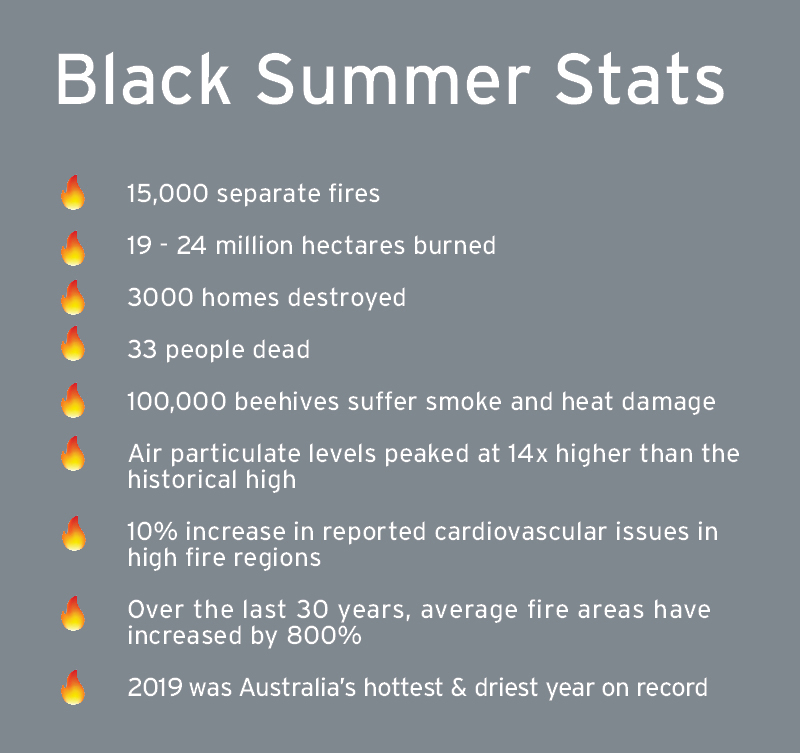
It’s a wonder it took the Black Summer Fires for this sort of action, given the long history of Aboriginal “care for country” and the mountains of evidence that show that prior to European colonization the Aboriginal people had been burning the landscape for millennia and these techniques had essentially supported increased biodiversity and a decreased risk of out-of-control bushfires.
The fossil record has revealed that Aboriginal presence in Australia began close to 50,000 years ago. In Bill Gammage’s groundbreaking book, The Biggest Estate on Earth, he details the overwhelming evidence that Aboriginal communities managed ecosystems across the country in line with their spiritual understanding of “relationship to country”, and a deep knowledge of the nuanced connections between the many plant and animal species – and fire – in the landscape. Gammage notes that the Europeans who first began to explore and survey (and colonize) Australia arrived to a landscape that looked more like “plantations in a gentleman’s park” with grasslands and wooded groves and forested mountains without thick leaf litter. There are numerous accounts of Aboriginal groups burning with cool, slow fires that appeared to support increased fertility of the land and soil, supporting access to all manner of medicinal plants and food. A proper cool fire will not burn the canopy of the trees in a landscape where fire is fit to use. It was clear that methodologies for appropriate burning regimes had been refined over generations based on deep knowledge of the nuances of each unique ecosystem, taking into account “wind, humidity, aspect, target plants and animals and fuel loads.”
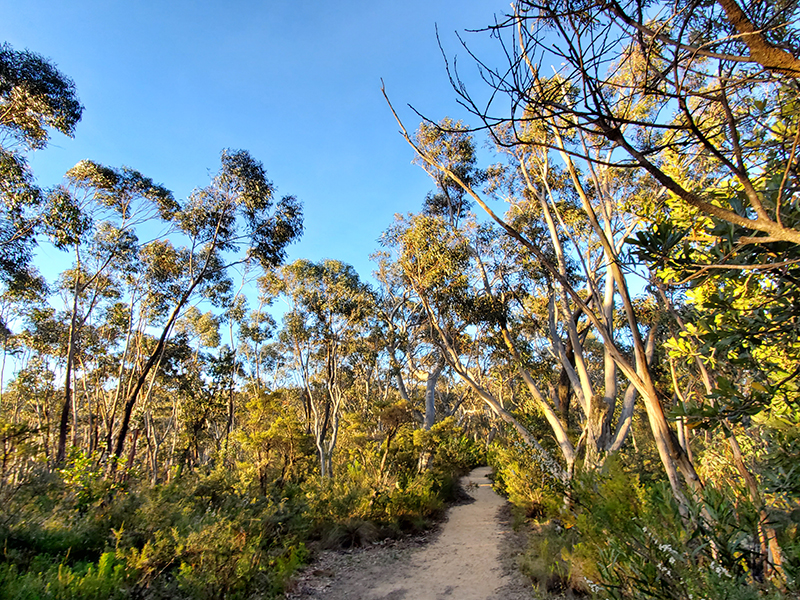
the rules for fire and fire use are many and varied, and are dependent upon an intimate knowledge of the physical and spiritual nature of each portion of the land.
Gammage notes that, “trickling cool fires and clearing hot fires were timed to keep species in balance. On dry Sydney sandstone, people burnt cool fires in spring, but hot fires in early summer to open hard seeds and pods or germinate legumes.” Unlike other continents, 70% of Australia’s native plants need or tolerate fire in their life cycles. The Aboriginal people had developed a deep understanding of how to maintain and care for country knowing this, creating a rich and biodiverse mosaic of landscape types across the continent. Each system had a season and timing for burning based on the plant species present, specific animal behaviors around fires, the temperature, and soil conditions. Natural firebreaks and knowledge unique to each ecosystem was known in the community. “Fire was a totem. Whoever lit it answered to the ancestors for what it did…. the rules for fire and fire use are many and varied, and are dependent upon an intimate knowledge of the physical and spiritual nature of each portion of the land. Without knowledge it is impossible to care for country in the appropriate way.”
In one account Gammage shares, a Pitjantjatjara elder notes that “before the arrival of white people Anungu did not know about really big bushfires, but now they do… the country had been properly looked after and it was not possible for such things as large scale bushfires to occur.” Unfortunately, with the arrival of the British, Aboriginal groups were forcibly removed, massacred, or moved into missions. Not only did these people experience a disconnection from their landscape and community, the ecosystems began to evolve without the constant cool fire regimes, leading to an increased likelihood of destructive wildfires and biodiversity loss. Added to this were the influx of new and oft-times invasive species imported from Europe and Asia, further taxing the native landscape.
With each Indigenous generation further disconnected from their homelands and cultural practices, there has been increased loss of the knowledge (as well as the language) to care for these ecosystems. Luckily a handful of individuals have begun work to stem that loss and inspire younger generations to reconnect with their heritage. Victor Steffenson had struggled from a young age to understand his Aboriginality, “as a mixed-race person” growing up in the rain forest village of Kuranda along the Barron River in Queensland. But on a fishing and hunting excursion he’d taken to lower Cape York, he had connected with two elders in the community, the brothers Tommy George (TG) and George Musgrave (Poppy). TG and Poppy were respected elders knowledgeable in the traditional ways of “burning country.” In his book, Fire Country, Steffensen describes how he began to learn to “read country” and watch for the best conditions for cool burning under their guidance. Steffensen felt a sudden and deep connection to these practices. Together with the brothers, he worked with local National Parks rangers in the region to explore opportunities for cultural burns on ancestral lands that had been ceded back to the elders’ clan.
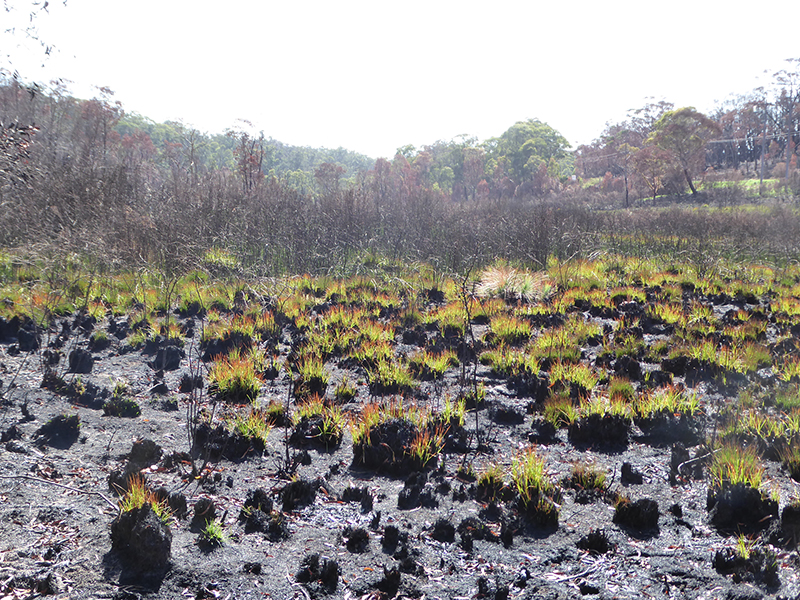
As the burning practices took hold, he witnessed a change occur within the broader community, seeing the landscape and its native wildlife species through the lens of Aboriginal fire.
the land is the oldest living Elder for any Indigenous clan group and has been there all along. The country is our teacher…
Each system had a very specific regime associated with the plant and animal species, their surrounding context, and the spiritual elements in the landscape. He notes that “the land is the oldest living Elder for any Indigenous clan group and has been there all along. The country is our teacher…” However, cultural burning is a wildly different approach than the western science-based hazard reduction burns that have been popularized to respond to wildfires in Australia. He and his community constantly experienced pushback from the government agencies. “Burning the country to look after it this way takes more time and effort than any other modern fire management techniques” and so it wasn’t always seen as the most effective approach.
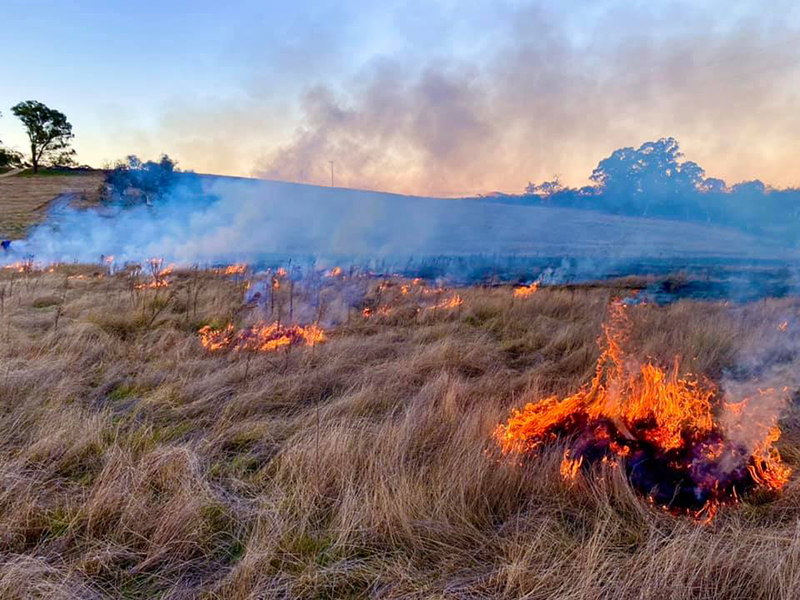
Steffensen worked to develop the Traditional Knowledge Recording Project with the elders in his community and beyond, creating tools for indigenous groups to revive their cultural knowledge and ensuring that youth had a significant role in the recording of the elder’s insights. “From all my journeys around Australia, the most heartbreaking thing for me is seeing too much sick country,” said Steffensen. “Sometimes I feel like crying when I see so much land devastated and neglected. When the old people die the land will die with them.”
Steffensen became increasingly concerned that western science was trying to apply Indigenous burning techniques without the “deeply rooted knowledge of country” that Aboriginal community members bring to these practices. While his efforts to engage with provincial and federal government entities has met with mixed success, he had considerable success with a series of Indigenous Fire Workshops to further expand the sharing of knowledge with other clan groups around the country. Steffensen aimed to ensure that workshops and knowledge-sharing is focused on empowering Aboriginal communities to manage their own fire programs and expand their influence on the landscape through this “traditional knowledge revival pathway.” He notes that “Indigenous people bring the… knowledge of how to live practically and spiritually with the land for so long without destroying the planet.”
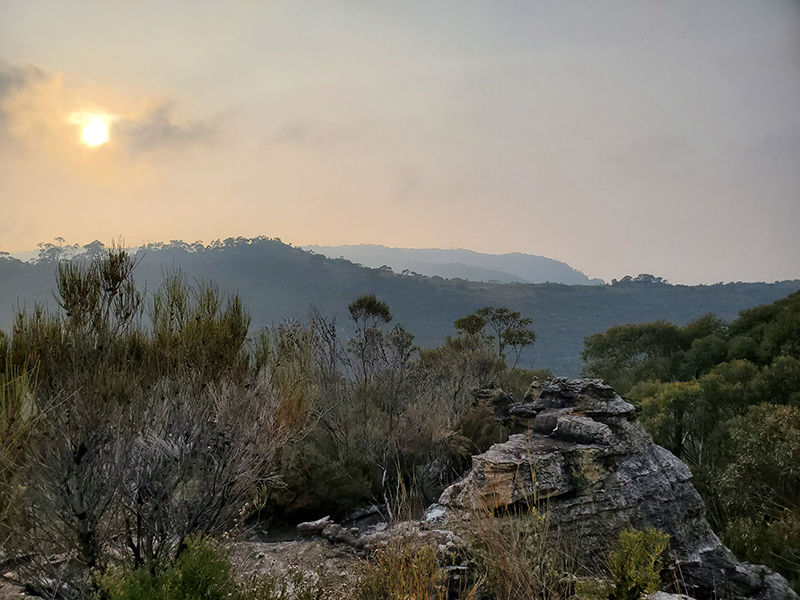
In 2010 Den Barber, a seasoned National Parks Ranger and firefighter of Wiradjuri descent, attended one of the workshops led by Steffenson in Cape York. To hear him tell it, it was a life-changing week. As a resource officer and cultural liaison, Barber had engaged with the Aboriginal communities in and around the Greater Blue Mountains for many years, but he had no idea what to expect of this workshop. Nonetheless he was eager to accompany nine Aboriginal community members from NSW to this important knowledge-sharing event. As he describes it, a day of epiphany occurred in the middle of the week when he lit his first fire under the watchful eyes of the elders. Workshop participants were each handed a box of matches and instructed to spread out, light a single match, and then drop it in the grass. After they lit their fires they were instructed to observe the slow burn move across the grassland – each circle of fire joining with the others. The elder leading the burn asked them to start noting all the small changes in the landscape. Insects crawled away. A frog hopped up a tree. Native kites swooped in to feed on the escaping grasshoppers. Women stood and watched with kids on their hips and men walked barefoot around the edges of the fire. Barber was struck by the calm of the scene: no firetrucks, no helicopters, no panic or pandemonium. Instantly he knew he wanted to be part of this movement to bring back cultural burns in the landscape.
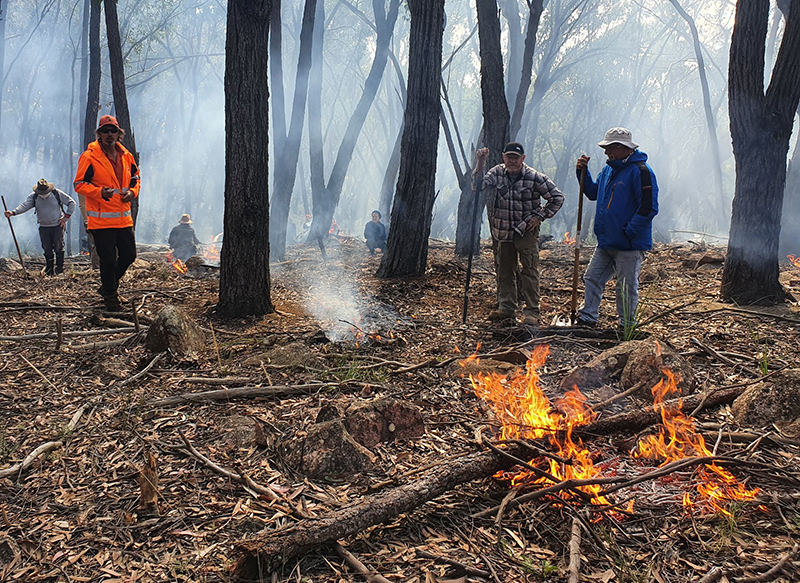
Upon his return, after meeting with stiff resistance from his superiors at National Parks to try to pilot a cultural burning program on Parks land, Barber decided to create a local community group called Blue Mountains Firesticks to advocate for cultural burning in the region. He began hosting workshops in New South Wales and performing cultural burns on private properties where landowners (many of whom were Aboriginal) were interested in applying this generational knowledge to better care for country.
As the Gospers Mountain Fire moved furiously through the bush in the Wollemi National Park in early December of 2019, Barber, like my fellow BigCi residents and I, was closely watching the FiresNearMe app as the footprint of the fires continued to expand southward. The fire jumped a road and joined another fire in the Yengo National Park bearing down on properties where he had been performing cultural burns and led workshops as part of a cultural camp for a few years. A day later he heard from the owner that all the structures in the areas where they had conducted cool burns had survived. The evidence was clear that cultural burning practices had saved the properties. The story was profiled in the Sydney Morning Herald and suddenly he was overwhelmed by calls from journalists and homeowners inspired by this effort. Barber left his government job and started a business, Yarrabin Cultural Connections of New South Wales, just as the pandemic hit Australia. For the last two years, he has run workshops on private lands and worked with homeowners interested in cultural burning.
Aboriginal people don’t manage country. That’s our Mother Earth; she provides for us. We don’t manage her. We simply look after her.
Barber noted recently that cultural integrity is very important to him. On his mother’s side he is a descendant of the Traditional Aboriginal people from Mudgee of the Wiradjuri. “Aboriginal people don’t manage country. That’s our Mother Earth; she provides for us. We don’t manage her. We simply look after her.” His vision is to create opportunities for Aboriginal youth to practice their culture while making a living, and he is seeing glimpses of this in his workshops where they are showing up and “they’re loving it.”
Barber is working with another landowner on a property just outside of Canberra, where he is holding workshops open to the community and helping the owner burn country to support long-term resilience. While this property at Birkenburn Farm in Bungendore, NSW wasn’t directly impacted by the Black Summer fires, they want to manage the landscape in a more regenerative way, both in farming and looking after the bush in the mountains above the paddocks. As his workshops have continued to gain appeal he has begun working with his former colleagues at NSW Land Services, to run workshops around the state and on public lands like the traveling stock reserves.
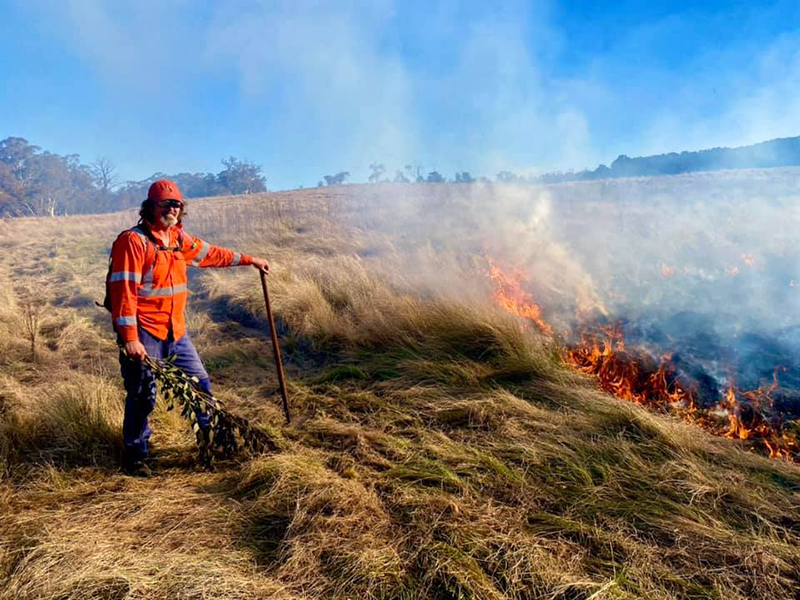
When asked what he might offer up to folks here in North America, Barber was candid about his lack of knowledge of the traditional practices amongst Native American Indigenous groups – although he’d love to “have a yarn with them.” His advice is that we ask ourselves, “How can we invite them into the space, to play a part in trying to stop this continuous cycle of devastation?”
In the two years since I have returned from Bilpin I have often reflected on this notion of “care for country” and the seminal importance of acknowledging and engaging with the Indigenous communities who are the traditional landowners and stewards. It is not only their knowledge but the language they use in relationship to nature that we can all learn from, but we cannot do it without them at the table with us. We have much work to do, both here in the US and around the globe, to help reframe our discussions and create a more holistic and inclusive space for true ecological resilience, fulfilling our responsibility to landscape, wildlife, and water.
“To live through a fire is to have witnessed the cycle of life and death, and to know our role in it. The firesticks were used by generations of Aboriginal people to manage their bushland. They carefully lit cool fires, just enough to maintain openings that promoted growth of bush potatoes and other edibles and medicinals, making hunting easier, supporting increased biodiversity, and lowering the severity of the natural fires that came every summer. We’ve lost that legacy as the original peoples of this country have been displaced, communities destroyed, and families separated. If we are to survive this climate emergency we must embrace the traditional ecological knowledge of the original custodians of this country, cultivating practices like cultural burning. We need to reconsider our relationship to land and to the fossil fuels we extract from it. We must cultivate kinship with our fellow creatures and consider the impacts we have with our every action and reaction: to practice reciprocity. “ – Dowdell, JA, The Earth Issue #4, Summer 2020
